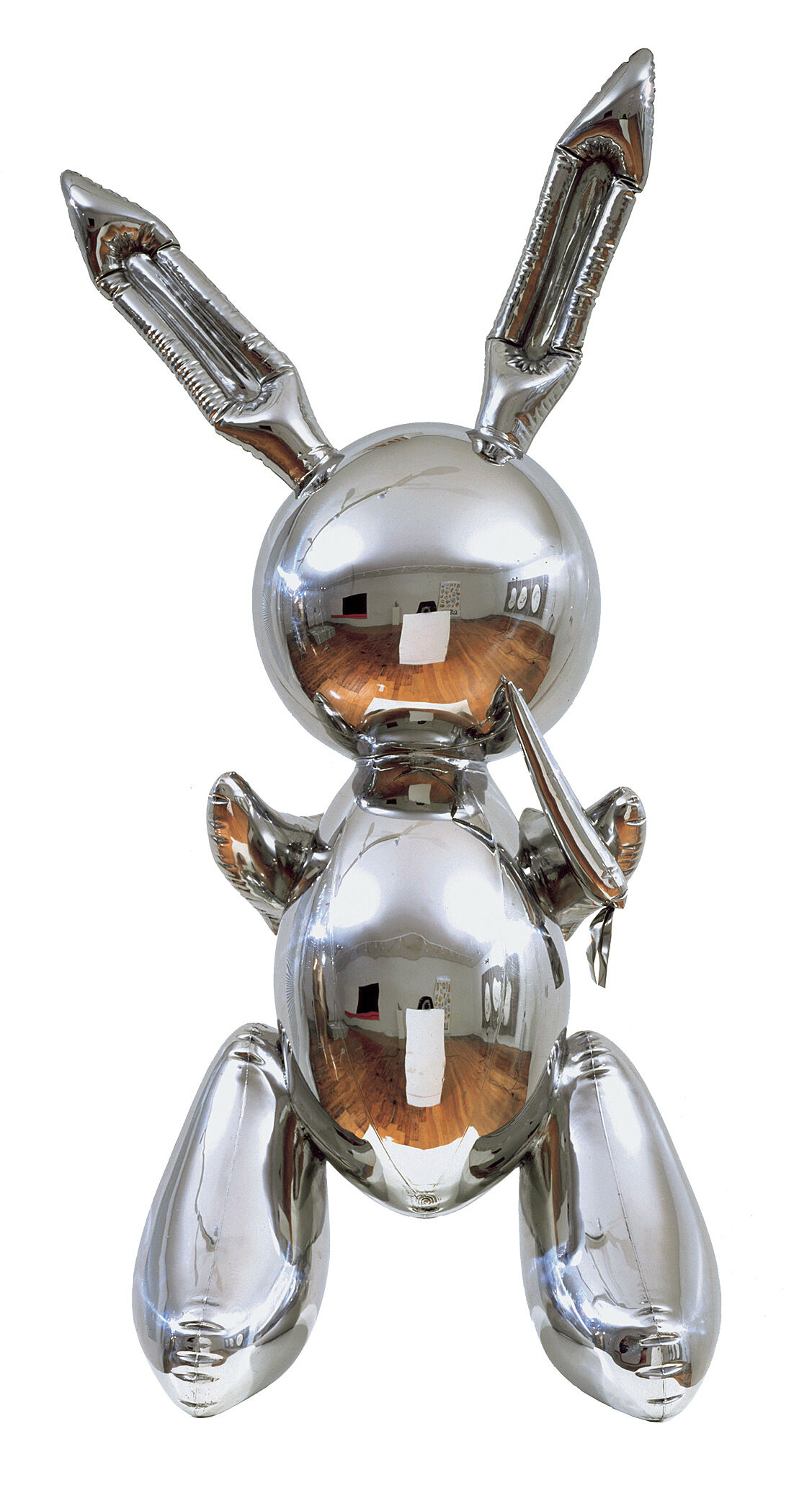Jeff Koons: A Retrospective | Art & Artists
June 27–Oct 19, 2014
Jeff Koons: A Retrospective | Art & Artists
Statuary
5
Equilibrium and Luxury and Degradation established Koons as one of New York’s hottest young artists, and in 1986 he was invited to show his work at the prestigious Sonnabend Gallery in SoHo. He conceived of a series titled Statuary, a term that suggests a borderland just outside the domain of sculpture. Fittingly, Koons based this series on a broad range of readymade models, from corny mass-market curios to distinguished portrait busts and rendered all of these models in stainless steel. By transforming his lowbrow readymades into highbrow art and making his historical sources more contemporary, Koons achieved a kind of democratic leveling of culture. Taken together, the Statuary works evoke a panoply of emotions and styles—melancholy or joy, realism or caricature—and demonstrate Koons’s keen manipulation of ingrained ideas about art and taste.
Rabbit, 1986
The vinyl inflatables in Koons’s earliest works represented, for him, the precarious nature of life; at any moment the objects could deflate. Meanwhile, the metal sculptures of Statuary, he suggests, “have a permanence to them, they maintain a nondivisible sense of life, of continuity.” This contrast is embodied in the form of the inflatable rabbit, which first appeared as a vinyl readymade and returns here cast in stainless steel. While the crinkles and curves of vinyl are represented with uncanny accuracy, the original toy’s pastel colors and smiling face are now effaced by a uniform sheen. With this gesture, Koons opens the figure to a wider range of interpretations. It has been compared to the Playboy and Easter bunnies, a helmeted spaceman, or an orator wielding a microphone. The fact that the rabbit’s head reflects and distorts those who observe it, further suggests that the source of its meaning lies in all of us.

